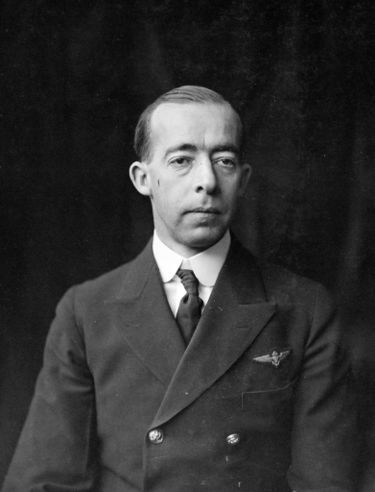Monuments
US Navy R38 Airship Crew Monument
US Navy R38 Airship Disaster Memorial Plaque
Naval Air Station Paimboeuf Memorial, WW1

Comdr. Louis H. Maxfield, U.S.N., was head of the U.S. Rigid Air Detachment based at Howden. He was born in 1883 in Minnesota USA and entered the Naval Aviation service in 1914. He served in Europe during WW1 and was in command of the U.S. Naval Station at Painbaeuf in France.
LCDR Maxfield was killed when the experimental dirigible R-38 broke up and exploded in England on it 4th and final test flight prior to being purchased by the U.S. Navy from the British who built the airship. The intentions were for America to utilize this ship during WWI and become the main means of transportation in the future. A total of 44 men lost there lives 17 were Americans. Witnesses said it appeared to break in the middle and the front half exploded, the tail end fell in the Humber River, Hull, England, there were 4 survivors pulled from it. One being the pilot.
Cause of Explosion: Zepplins fly on hydrogen and as a result of their highly flammable lifting gas, it exploded over the river with thousands of spectators on the shore watching this amazing aircraft take off. No one on the shore-side were injured.
Louis attended MIT in Boston from September 1902, until January 1903. He then took the examinations for the Naval Academy.
His grandmother Mrs. Alexander Cathcart attended the D. A. R. congress in Washington in April 1906, and then visited with Louis at the Naval Academy. In September, he was ordered to the Illinois in Provincetown, Massachusetts.
On March 6, 1909, he married Harriet Page in Norfolk. Her paternal grandfather was Commander Hugo Nelson Page who was with Commodore Perry on Lake Erie. Her maternal grandfather was Commodore Marshall Parks.
In 1916 Louis spent six months at the Curtiss plant in Buffalo, New York. He was supervising naval work being carried on at the plant and acted as naval inspector.
Louis wrote an article shortly before his death entitled “Life in the Hold of the ZR-2.” Per The Boston Globe, August 25, 1921, the article “gives an idea of the hazards encountered in the maintenance and operation of a giant dirigible and of the necessity for the strictest inspection to keep the ship in trim with the atmosphere. It is reprinted from a report in United States Air Service.”
When Louis died, he and his wife were living in Ambrough with their children 11-year-old Page and 2-year-old Peter. His widow was there watching the rescue work with the other widows.
Louis' father Louis H. was a businessman. His mother was Adelaide, brother Alexander Cathcart Maxfield, and sisters Eleanor and Alice (Mrs. Marshall Coxe.)
From Together We Served:
Comdr. Louis H. Maxfield, U.S.N., who was in charge of the U.S. Rigid Air Detachment in training at Howden, and who was to be the Commanding Officer of the ill-fated airship on the flight to America, was born in 1883 at St. Paul, Minnesota. He entered the Naval Aviation service in 1914, and was promoted to Temporary Commander in 1918. During the War he was in command of the U.S. Naval Station at Painbaeuf, France, and served with distinction. During a flight in the French airship "Capitaine Caussin" he dived overboard from a great height and rescued an enlisted man who had fallen overboard. Comdr. Maxfield was decorated by the Italian Red Cross with a silver medal for distinguished work during the Messina earthquake, with the French Naval Life-saving Medal (Silver), was an Officer of the Legion of Honour, and was decorated by the U.S. Government with the Navy Cross and the Victory Medal.
He was designated Naval Aviator #17 (LTA) in 1915.
Louis was survived by his wife and two children; he is buried in Arlington National Cemetery.
Navy Cross Citation:
The President of the United States of America takes pleasure in presenting the Navy Cross to Commander Lewis Henry Maxfield, United States Navy, for extraordinary heroism on the occasion of the fall of the French dirigible Captaine Caussin, in which he was acting as direction pilot. Two enlisted men in the nose of the dirigible went overboard when it struck the water. Being encumbered by their fur-lined suits and boots, both men called for help, and Commander Maxfield jumped overboard and went to their assistance. The dirigible drifted away and he had much difficulty in keeping them up, but succeeded in doing so until help arrived.
LCDR Maxfield is now buried in the Arlington National Cemetery, Arlington, Arlington County, Virginia, USA.
Source of information: www.findagrave.com, www.britishairshippeople.org.uk
